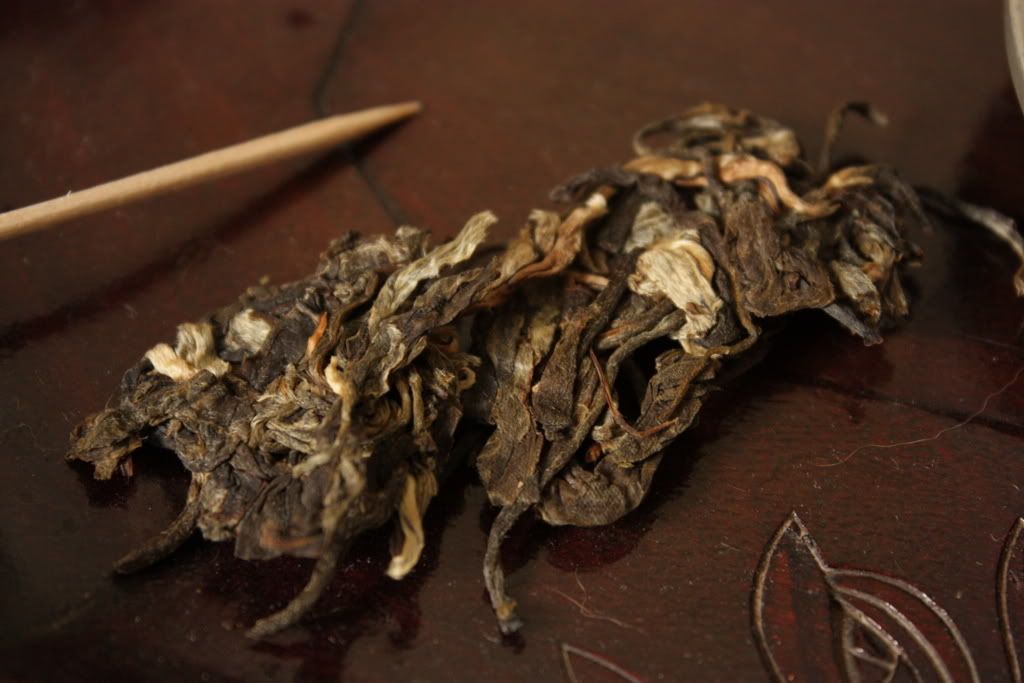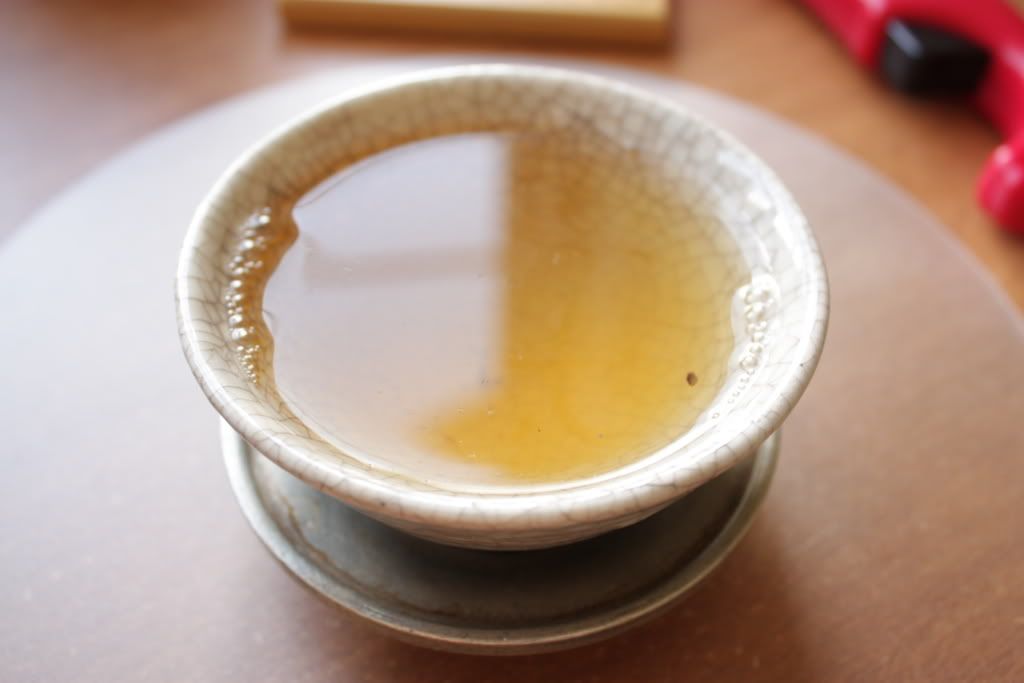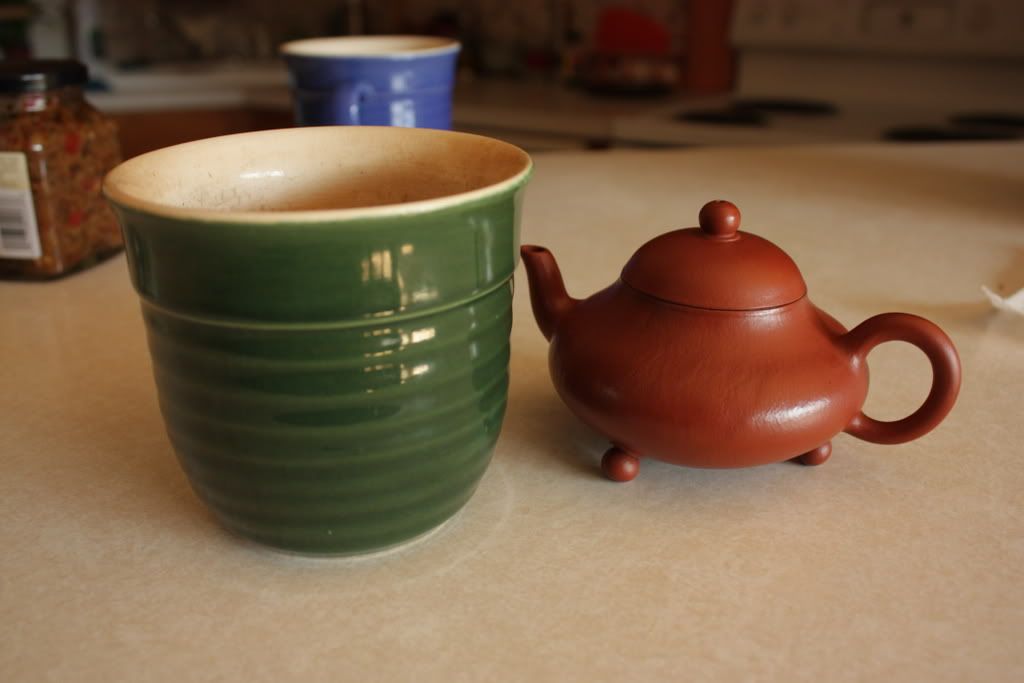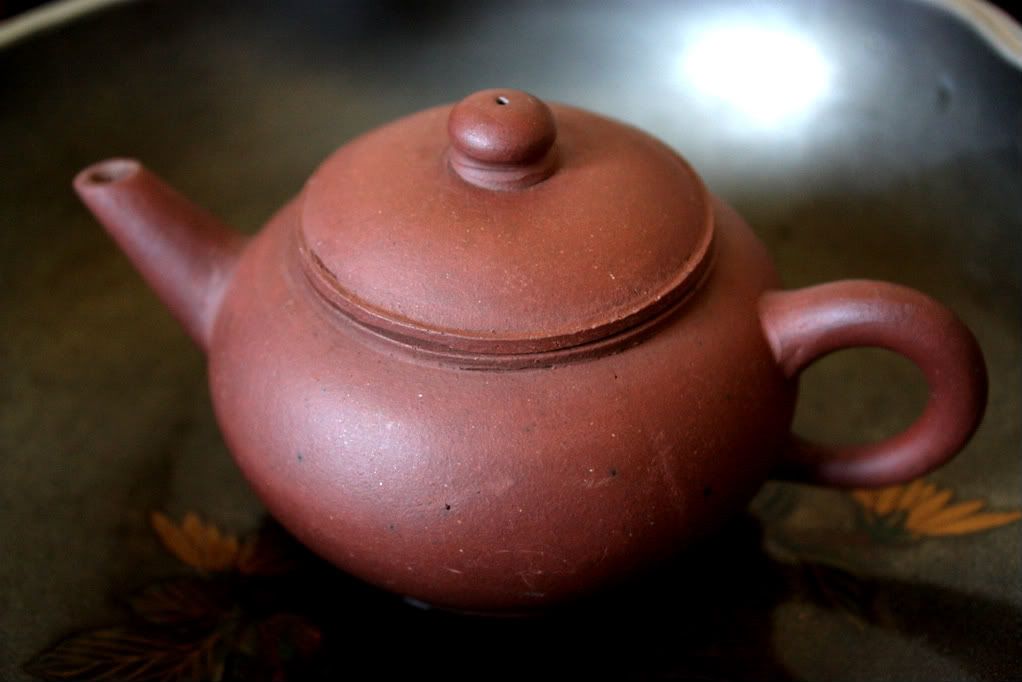One of the things we do when we blog is to talk about teas we’ve tried. I have been slowly drifting away from that, as I find less and less interest in dissecting a tea. The reasons are manifold, but mostly it’s because my opinion is only that — my opinion. You have to try a tea for yourself before it means anything. The same is probably true too for teapots, teaware, water, and all that other stuff. I might like something, but a big, big caveat that runs through the entire blog is — just because I like it doesn’t mean you’ll like it.
Sometimes though, it turns into a bit of a service. Jim at Puerhshop recently contacted me and offered to send me a sample of his new tea. The tradeoff, of course, is that I’ll talk about it. It doesn’t necessarily mean I’ll talk about it positively, but I’ll talk about it. If it’s something that I think is worth looking into and letting other people know about, I will be happy to do so.
The tea in question is his “American Hao” or Meiguo Hao. The name might sound slightly unfortunate — it is a mix of the Chinese usage of “Hao” as a trademark name, and the obvious connotation that this is done by somebody from the US of A. Interestingly enough, the wrapper on the cake does not say anything like it — instead, it says “Mengsa Yuanyexiang” with the date 2008, April 20th stamped on it. Mengsa Yuanyexiang evokes the name of the now slightly famous (or infamous) cake that has been sold through a number of channels and which made some people a pretty penny when it got famous. These days you can find all sorts of cakes named Yuanyexiang… Supposedly, the 200g and 400g versions are the same thing, just different sized cakes.
The name of a tea of course doesn’t really say much of anything, especially those of you who are more experienced with puerh and know that what’s on the label rarely, if ever, matches anything within the wrapper. How does the tea hold up?

The tea is a somewhat typpical looking young puerh, green with some tips, not too broken. When it hits the warm pot it smells a bit like a green tea would, but I’ve found that to be quite typical these days of puerh made. The first thing I noticed is that it brews cloudy — I tried the tea three times, using the whole sample Jim sent me, and it has brewed cloudy every time. Cloudiness is not, in and of itself, a problem. From what I have learned, it might imply issues with humidity and should clear up with some time resting.

The first time I brewed the tea, I made it a bit too strong, and the tea turned a little sour and too bitter. The next two times I adjusted, and I think overall, the tea is a bit understated — nothing too fancy, nothing too interesting, and nothing too obviously bad either. There were ome signs of activity, but it’s not too pronounced. It did, however, make my stomach ache a little, but that’s almost par for the course these days. It might be slightly on the green side of things, but again, that seems to be more common than ever. You can tell I don’t drink much young puerh anymore. My stuff have been sitting in a box waiting to age.
I think this is, personally, not my type of tea, but then, lots of young puerh are not my kind of tea, so that’s really not saying much. I do think it might be something worth a try, given its price point and interest factor.









 RSS - Posts
RSS - Posts
Interesting.... would 250C in my oven work?